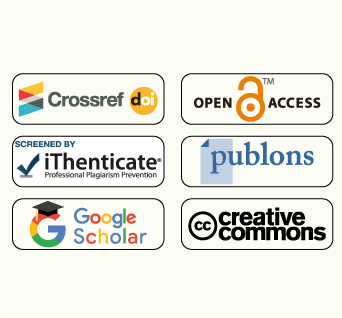Utilizing of the quality function deployment (QFD) to analyze the effects of using autonomous vessels on maritime shipping factors
Abstract
The maritime sector has seen a significant digital shift and technical advances related to the design and development of unmanned ships. Autonomous cargo ships, also known as maritime autonomous surface ships (MASS), are crewless vessels that transport either containers or bulk cargo over navigable waters with little or no human interaction. Applying third and fourth generation of full autonomous vessels will be expected to improve maritime navigation in the future.
This paper attempts to give a complete view of the development of autonomous vessels by exploring the long-term effects of using unmanned or fully autonomous vessels on regulations, technologies and shipping industries that reflect the new paradigm in the shipping industry. The effects of Maritime Autonomous Surface Ship (MASS) implementation of the maritime shipping factors will be analyzed based on a Quality Function Deployment (QFD) Decision model that demonstrates global maritime shipping behavior through implantation of MASS.
The research paper results indicated the most important factors and criteria, in order of importance, in the recent trends in the development of autonomous vessels. The safety requirements in operating ports, cyber security from hacking risks, legal approval and ethical issues, cost implications, and maritime recruitment are some of the most important factors to consider, adopting such technological development for maritime shipping.
Received: 06 August 2023
Accepted: 10 October 2023
Published: 12 December 2023
Keywords
Full Text:
PDFReferences
Burmeister, H.-C. et al. (2014) ‘Autonomous Unmanned Merchant Vessel and its Contribution towards the e-Navigation Implementation: The MUNIN Perspective’, International Journal of e-Navigation and Maritime Economy, 1, pp. 1–13. Available at: https://doi.org/10.1016/j.enavi.2014.12.002.
DNV GL (2018) Remote-controlled and Autonomous Ships in the Maritime Industry.
DNV GL (2020) The ReVolt: a new inspirational ship concept.
Freyja, L., and T.K. (2020) ‘Global Marine Technology Trends Autonomous Systems’, University of Southampton journal.
Ghaderi, H. (2019) ‘Autonomous technologies in short sea shipping: trends, feasibility and implications’, Transport Reviews, 39(1). Available at: https://doi.org/10.1080/01441647.2018.1502834.
Global Marine Technology Trends 2030 (2015). Available at: https://www.lr.org/en/knowledge/research-reports/global-marine-technology-trends-2030/.
IMO (2017) Report of the maritime safety committee on its ninety-eighth session. Geneva.
IMO (2021) Regulatory Scoping Exercise for the Use of Maritime Autonomous Surface Ships (MASS). London.
Kim, T. and Mallam, S. (2020) ‘A Delphi-AHP study on STCW leadership competence in the age of autonomous maritime operations’, WMU Journal of Maritime Affairs, 19(2), pp. 163–181. Available at: https://doi.org/10.1007/s13437-020-00203-1.
Komianos, A. (2018) ‘The Autonomous Shipping Era. Operational, Regulatory, and Quality Challenges’, TransNav, the International Journal on Marine Navigation and Safety of Sea Transportation, 12(2), pp. 335–348. Available at: https://doi.org/10.12716/1001.12.02.15.
Lang, D. (2020) Update on the Worldwide Supply and Demand for Seafarers.
Porathe, T., P.J., and M.Y., (2021) ‘Situation Awareness in Remote Control Centres for Unmanned Ships.’, In Proceedings of Human Factors in Ship Design & Operation, London, UK. Maritime Economics & Logistics, pp. 116–135.
Rødseth, J. (2021) ‘Towards Shipping 4.0. Proceedings of Smart Ship Technology’, Royal Institution of Naval Architects. IEEE Underwater Technology. [Preprint].
Schröder-Hinrichs, J.-U., Hollnagel, E. and Baldauf, M. (2012) ‘From Titanic to Costa Concordia—a century of lessons not learned’, WMU Journal of Maritime Affairs, 11(2), pp. 151–167. Available at: https://doi.org/10.1007/s13437-012-0032-3.
Taufer, C. and, K.A., and B. (2019) ‘A Protein Structure Prediction Supercomputer" Based on Public-Resource Computing’, in Workshop on High Performance Computational Biology (HiCOMB’05). Maritime Economics & Logistics, pp. 243–257.
Terninko, J. (2018) Step-by-Step QFD: Customer-Driven Product Design, Second Edition, Step-by-Step QFD: Customer-Driven Product Design, Second Edition. Available at: https://doi.org/10.4324/9780203738337.
DOI: http://dx.doi.org/10.21622/MRT.2023.02.2.151
Refbacks
- There are currently no refbacks.
Copyright (c) 2023 Mustafa Abd Elhafez, Sameh Rashad, Tamer S. Riad
Maritime Research and Technology
E-ISSN: 2812-5622
P-ISSN: 2812-5614
Published by:
Academy Publishing Center (APC)
Arab Academy for Science, Technology and Maritime Transport (AASTMT)
Alexandria, Egypt
mrt@aast.edu

